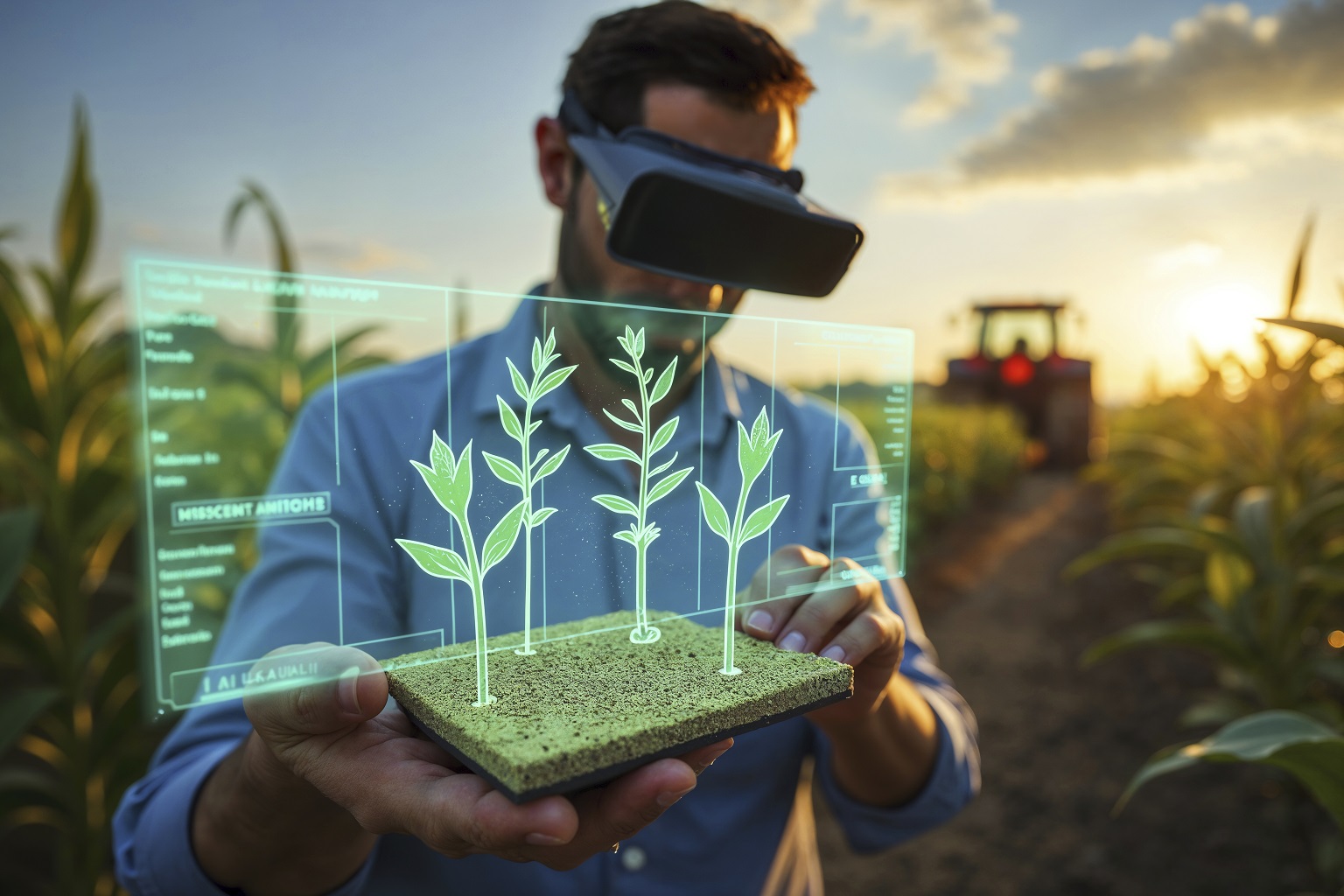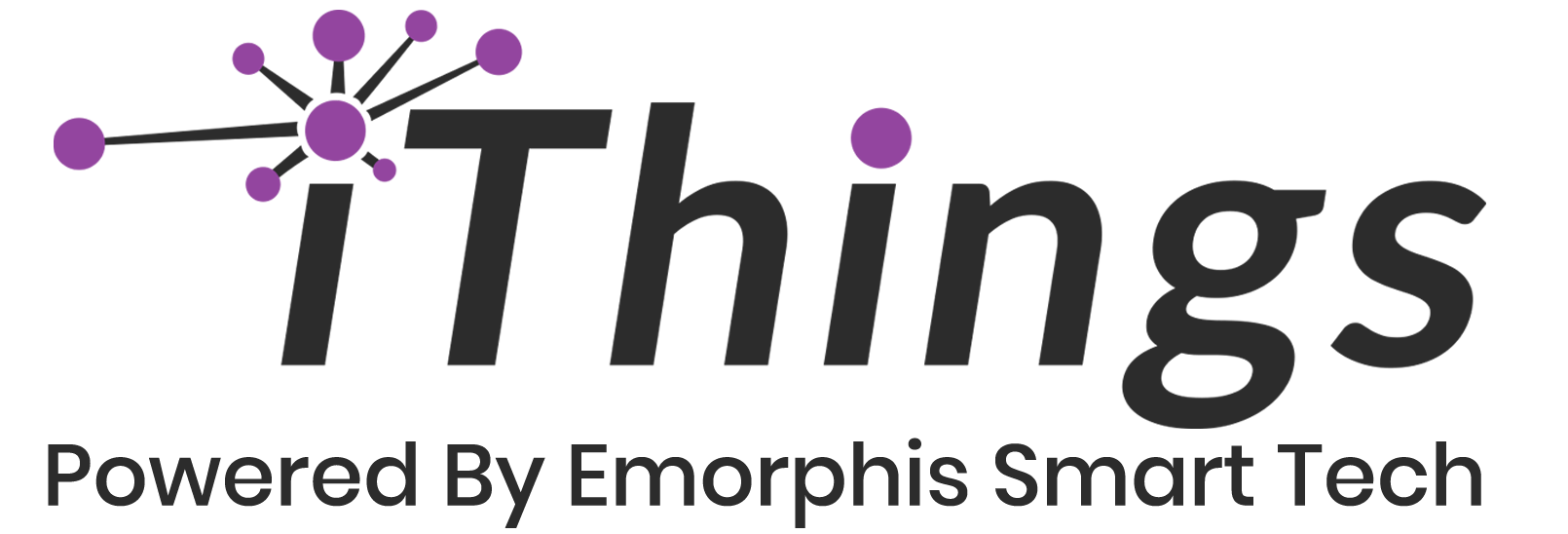
The agriculture industry is rapidly adopting IoT-driven solutions to enhance productivity, optimize resource utilization, and reduce operational costs. Farmers leverage IoT sensors, automation, and real-time analytics to improve decision-making, leading to better yields and sustainable farming practices in a highly competitive landscape.
The global agriculture IoT market size is estimated at USD 28.65 billion in 2024 and is projected to grow at a CAGR of 10.5% from 2025 to 2030. This significant growth highlights the increasing demand for precision farming, smart irrigation, and automated farming solutions powered by IoT technologies.
With IoT-enabled smart farming solutions, agriculture is shifting toward a data-driven approach, helping farmers monitor soil conditions, predict weather patterns, and optimize water usage. These advancements not only improve efficiency but also promote sustainable farming by minimizing waste and reducing environmental impact.
How is IoT Used in Agriculture?
Step 1: Deploying IoT Sensors in the Field
Farmers install IoT-powered sensors in the soil, weather stations, and livestock areas. These sensors continuously monitor crucial parameters like soil moisture, temperature, humidity, and crop health.
Step 2: Data Collection and Transmission
The sensors collect real-time data on environmental conditions and send it to a centralized cloud-based platform. This eliminates manual monitoring and ensures accurate insights.
Step 3: AI and Analytics for Decision-Making
AI-powered algorithms analyze the data, detecting trends, and potential risks, and optimizing farming strategies. Farmers receive actionable insights via smartphones or computers.
Step 4: Automation of Farming Activities
Based on insights, automated irrigation systems adjust water supply, GPS-guided tractors perform precision planting, and drones monitor crop health, reducing resource wastage.
Step 5: Remote Monitoring and Predictive Analysis
Farmers track conditions in real-time from anywhere. Predictive analytics help forecast weather changes, optimize pesticide use, and prevent disease outbreaks.
Step 6: Improved Farm Management and Sustainability
By leveraging IoT-driven automation and analytics, farmers increase yields, reduce operational costs, and ensure sustainable agriculture with minimal resource wastage.
10 Technology Use Cases of IoT in Agriculture
1. Precision Farming for Higher Yield
IoT sensors collect real-time data on soil moisture, nutrient levels, and weather conditions. This data enables farmers to apply fertilizers, water, and pesticides efficiently, ensuring optimal crop growth. Precision farming reduces resource wastage, increases productivity, and enhances sustainability by optimizing land use and minimizing environmental impact.
2. Smart Irrigation Systems
IoT-powered irrigation systems use sensors to measure soil moisture and weather conditions. These systems automatically adjust water distribution, preventing overwatering and under-watering. Smart irrigation ensures efficient water usage, conserves resources, and maintains optimal plant health by providing crops with the necessary hydration at the right time.
3. Livestock Monitoring and Management
IoT-based wearable devices track livestock movement, health, and reproduction cycles. Farmers receive real-time alerts about illnesses, abnormal behaviour, or breeding cycles. This enables timely medical intervention, improved herd management, and higher productivity, ensuring healthier animals and reducing losses due to diseases or unmonitored breeding issues.
4. Climate Monitoring and Weather Forecasting
IoT weather stations monitor temperature, humidity, and rainfall patterns, providing farmers with accurate climate predictions. This data helps in planning planting schedules, harvesting, and protecting crops from extreme weather conditions. Early warnings allow farmers to take preventive measures, reducing risks of drought, storms, and unpredictable climate changes.
5. Smart Greenhouse Automation
IoT-enabled greenhouses use sensors and automated systems to regulate temperature, humidity, and light levels. These adjustments create an optimal growing environment, reducing manual labour and energy consumption. Smart greenhouses improve crop quality, increase efficiency, and enable year-round farming without relying heavily on unpredictable environmental conditions.
6. Pest and Disease Detection
IoT-powered cameras and AI-based analytics detect early signs of pest infestations and plant diseases. Farmers receive instant alerts, allowing them to apply targeted pesticides or biological solutions instead of widespread chemical use. This reduces crop damage, minimizes pesticide waste, and promotes healthier, eco-friendly farming practices.
7. Farm Equipment Automation
IoT-enabled smart tractors, autonomous harvesters, and robotic sprayers use GPS and AI for precision planting, weeding, and harvesting. These machines reduce labour costs, increase accuracy, and improve efficiency in large-scale farms. Automation minimizes human error and ensures crops receive the correct care at every growth stage.
8. Supply Chain and Logistics Optimization
IoT sensors track harvested crops during transportation and storage, ensuring temperature and humidity control to prevent spoilage. Smart tracking solutions help optimize logistics, reducing food wastage and operational inefficiencies. By maintaining quality during transport, farmers and distributors can increase profits and meet regulatory standards more effectively.
9. Drones for Crop Monitoring and Spraying
IoT-powered drones survey vast farmlands, analyzing crop health, growth patterns, and water distribution. These drones can spray fertilizers, pesticides, or nutrients precisely, reducing chemical waste and improving farm productivity. Using drones minimizes manual labour, increases efficiency, and provides real-time insights for better farm management.
10. Smart Seed Sowing and Soil Mapping
IoT sensors analyze soil composition, fertility levels, and moisture content, helping farmers select the best seeds for specific conditions. Smart sowing technology ensures uniform seed placement, optimal spacing, and improved germination rates, leading to higher yields and better soil health, optimizing land use efficiently.
Benefits of IoT in Agriculture and Farming
IoT is revolutionizing agriculture by improving productivity, reducing waste, and enabling smarter decision-making. Below are the key benefits of integrating IoT into farming:
1. Increased Efficiency
- Automated irrigation, precision planting, and smart machinery reduce manual labor.
- Streamlines farm operations, saving time and maximizing productivity.
2. Water Conservation
- Smart irrigation adjusts water usage based on real-time soil data.
- Prevents overwatering, conserving water, and ensuring sustainable farming.
3. Reduced Pesticide Use
- AI-driven pest monitoring enables targeted pesticide application.
- Minimizes harmful chemical exposure and promotes eco-friendly farming.
4. Better Livestock Management
- IoT wearables track animal health, movement, and breeding cycles.
- Helps farmers detect diseases early and improve overall herd productivity.
5. Data-Driven Decision Making
- Real-time analytics optimize planting schedules and resource distribution.
- Enhances farm management and prevents potential yield losses.
By leveraging IoT, farmers can achieve higher crop yields, reduce costs, and adopt more sustainable and efficient farming practices.
How IoT Enables Smart Farming with Cost-Effective Solutions
IoT is transforming traditional farming by integrating automation, smart sensors, and AI-driven insights, leading to cost-effective, resource-efficient, and high-yield agriculture. Farmers no longer rely on guesswork but instead utilize real-time data for decision-making.
1. Automated Farm Operations
- IoT sensors track soil moisture, temperature, and weather conditions to automate irrigation, fertilization, and pesticide spraying.
- GPS-enabled autonomous tractors and robotic harvesters reduce labor costs and improve efficiency.
2. Precision Farming for Cost Reduction
- AI-powered analytics optimize seed planting and fertilizer application, reducing excessive input use.
- Drones survey crops, detect issues and spray pesticides only where needed, saving costs.
3. Smart Irrigation for Water Conservation
- IoT-based irrigation systems adjust water usage based on soil moisture levels.
- Reduces water waste, lowers irrigation expenses, and ensures optimal plant hydration.
4. Livestock Management with IoT
- Smart wearables track cattle health, food intake, and movement, preventing diseases.
- Reduces veterinary costs and improves overall livestock productivity.
5. Supply Chain Optimization
- IoT sensors monitor the temperature and humidity of stored crops.
- Prevents spoilage, reduces food waste, and enhances transport efficiency.
The Outcomes of IoT in Agriculture
- Higher Yields – Optimized planting and resource use maximize production.
- Lower Costs – Reduced labor, water, and pesticide expenses enhance profitability.
- Improved Quality – Precision farming ensures healthier crops and livestock.
- Sustainable Practices – Minimizes environmental impact with data-driven solutions.
With IoT-powered smart farming, agriculture becomes more profitable, sustainable, and efficient, ensuring future-ready food production at a lower cost.
Challenges and Solutions to Implement IoT in Agriculture
While IoT is revolutionizing agriculture, its widespread adoption comes with several challenges. However, innovative solutions are helping overcome these barriers, making smart farming more accessible and efficient.
1. High Initial Investment Costs
IoT sensors, automation systems, and cloud-based platforms require significant upfront investments, which can be a hurdle for small and mid-sized farmers.
Solution: Governments, agritech firms, and financial institutions offer subsidies, leasing models, and IoT-as-a-service options, reducing capital expenditure and enabling affordable adoption.
2. Connectivity and Infrastructure Limitations
Rural farms often face poor internet connectivity, limiting IoT effectiveness in remote areas.
Solution: Low-power wide-area networks (LPWAN), satellite IoT, and 5G connectivity are being deployed to enable seamless, real-time data transfer in remote regions.
3. Data Security and Privacy Concerns
Farmers worry about cyber threats, data breaches, and misuse of farm analytics.
Solution: Implementing blockchain technology, encrypted cloud storage, and multi-layered cybersecurity helps protect sensitive agricultural data.
4. Technical Knowledge and Adoption Barriers
Many farmers lack the technical expertise to operate and maintain IoT devices.
Solution: Agritech firms, governments, and universities offer training programs, simplified IoT interfaces, and remote support, ensuring smooth adoption.
5. Device Maintenance and Integration Challenges
IoT devices need regular calibration and software updates to function optimally.
Solution: Self-diagnostic sensors, automated maintenance alerts, and predictive analytics help reduce manual intervention and ensure long-term efficiency.
By addressing these challenges, IoT can unlock its full potential in agriculture, enhancing productivity and sustainability.
How IoT is Transforming the Future of Agriculture
IoT is reshaping the future of farming by integrating automation, AI-driven analytics, and real-time monitoring, leading to data-driven, precision agriculture. Smart farming solutions will ensure higher efficiency, reduced resource wastage, and improved yield quality.
The expansion of 5G networks will significantly improve IoT connectivity in rural areas, enabling faster data transmission, real-time crop monitoring, and autonomous farm equipment. Farmers will have instant insights into weather patterns, soil health, and pest infestations, allowing immediate decision-making.
In the coming years, we will see AI-powered disease detection, robotic harvesting, and drone-assisted crop management revolutionizing agricultural operations. Automated greenhouses and vertical farming will optimize land use, increasing food production while conserving water and energy resources.
As IoT technology advances, agriculture will become more intelligent, self-sustaining, and climate-resilient, ensuring food security and economic growth for farming communities worldwide.
Conclusion
IoT is revolutionizing agriculture by improving productivity, sustainability, and efficiency. From smart irrigation to automated machinery, technology is reshaping farming practices for a more profitable future.
Despite challenges like cost and connectivity, innovative solutions such as AI, 5G, and blockchain are making IoT adoption more feasible, ensuring widespread implementation.
As IoT continues evolving, agriculture will become more automated, data-driven, and resource-efficient, securing a sustainable and tech-powered future for global food production.
